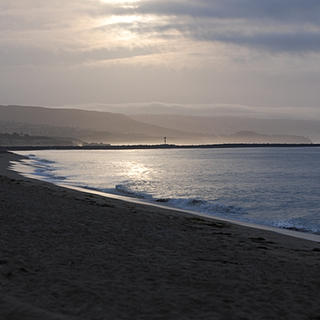Local Wetland Species and Their Adaptations
- OC Habitats
- Apr 7, 2023
- 3 min read

Swamps, bogs, and marshes. What is the first thing that comes to mind when you think of these habitats? Many people might think of a wet, smelly area of land with partially decomposed vegetation. While this may be true, wetlands are also home to a diverse ecosystem of organisms, all specifically adapted to live within the unique conditions that make up a wetland.
There are three parameters of a wetland: the presence of standing water, hydric or water-saturated soil conditions, and vegetation adapted to living in wet conditions. They are areas that are covered with water, whether freshwater, saltwater, or a mix of both, either seasonally or year-round. Within each of these unique sets of parameters live a variety of organisms, each equipped with adaptations that allow them to thrive in a wetland habitat. The organisms that we will be covering in this article reside in our local southern California wetlands. These are predominantly saltwater wetlands and are wet year-round. These organisms include pickleweed, the Ridgway's rail, and the round stingray.
Pickleweed, also known as Salicornia pacifica, is a low-growing succulent plant that ranges from a gray-green to a red color. It has a main stem which grows branching segments that resemble the shape of pickles, hence the name pickleweed. Pickleweed is uniquely adapted to using saltwater as its main source of water. When saltwater is taken up, the salt is removed and stored in specialized vacuoles at the ends of its segments (article). When these are full of salt, they turn red and drop off the plant! This process allows pickleweed to thrive in an otherwise uninhabitable environment for other plants. Pickleweed also provides habitat for wetland animals such as the Belding’s savannah sparrow and the endangered salt marsh harvest mouse, making it an important facet of a wetland ecosystem (Northcoast Environmental Center).

Up next is the Ridgway's rail, also known as Rallus obsoletus. It is a chicken-like bird with a cinnamon colored chest, an upward pointed tail, and an orange, slightly downturned beak. This bird likes to probe in the mud at low tide with its long beak, eating crustaceans, aquatic insects, crayfish, and other aquatic invertebrates (Green Foothills). Equipped with special salt glands that can desalinate water, the Ridgeway's rail can also drink seawater, a helpful adaptation that allows it to thrive in saltwater environments (All About Birds). It prefers to hide in dense vegetation and is more often heard than seen, often producing a rhythmic, dry chatter.

Unfortunately, the Ridgway’s rail is endangered due to the degradation of its wetland habitat (USFWS). This has been caused by human disturbances such as development, pollution, and rising sea levels as a result of climate change. Ridgeway rails tether their nests to cordgrass to keep them from floating away at high tide, but with rising sea levels and deteriorating wetland conditions, the cordgrass has not been enough to sustain the species.
Lastly, we have the round stingray, or Urolophus halleri. This is a common stingray found along the coast of California and Baja California. It has a smooth, round body that ranges in color from brown to gray on top and a white to yellow color on the underside. This contrast in color provides protection from predators through countershading; the ray blends into its environment from above and below (Florida Museum). Additionally, the round stingray has a sharp, barbed spine at the base of its tail that is used to defend itself against predators. When the ray encounters danger, the ray strikes with its spine, releasing venom into its attacker. This defense mechanism buys enough time for the round stingray to swim away to safety.

During the breeding season, the round stingray gives birth to live pups that are born independent. The mother does so in the safest place possible, which just happens to be in shallow waters provided by our local wetlands. The wetland environment provides safety and food for the pups as they grow until they graduate to life in deeper waters (Aquarium of the Pacific).
Wetlands are home to a diverse range of organisms, each given unique characteristics needed to survive in a wet environment. Sadly, 90% of California’s wetlands have been lost due to human activity ranging from water drainage and disrupted flows of water to building construction and pollution (My Water Quality). The remaining wetlands are protected by federal and state laws that prohibit further degradation of these sensitive ecosystems. This issue seems daunting, but you have the power to help! Join OC Habitats at one of our monthly restoration events where we remove invasive species, clean up debris, and plant native species here in our local wetlands.
Keep an eye out for our upcoming blogs, we will be posting each week instead of every other for all of April and May!







Comments